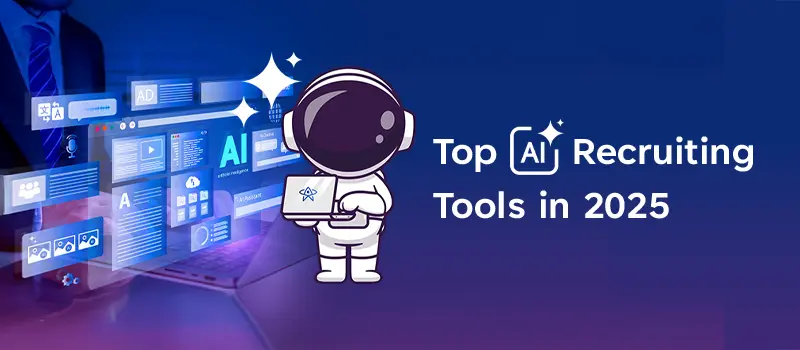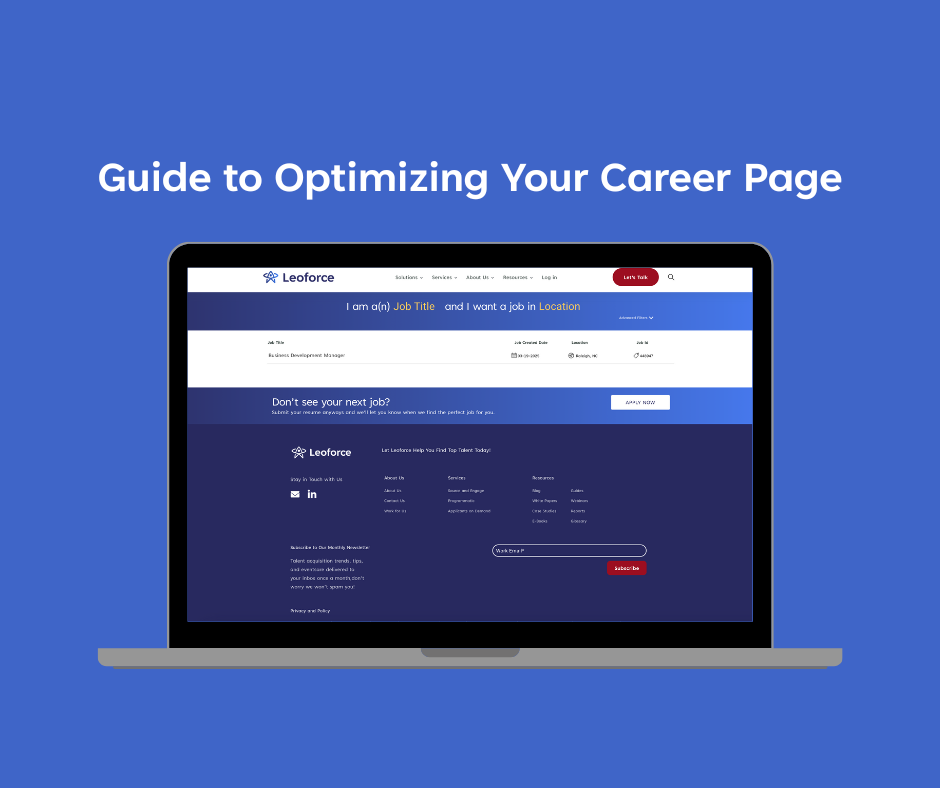Is Employee Value Proposition (EVP) Still Worth Investing In During Layoffs?

Recent headlines have been filled with news of large-scale layoffs at iconic US tech companies[1]. Unfortunately, giants of other sectors also seem to follow suit. This creates work pressure, apprehension and survivor guilt among the remaining employees of such organizations. On the other end of the table, between layoffs and quiet quitting, evidently, the management principles underlying the employee value proposition (EVP) are failing. Still, several organizations only seem to focus on transition plans while doing short-term patching of employer branding. This poses a unique question “Is EVP even worth thinking about during economic crises?”
Answer: Yes! And resoundingly so.
Because whether employer, employee or recruitment service – brought to fix the burning bridge between them – can ignore the shifting long-term systemic truths regarding the future of work. It’s during these times that an employer’s empathy, branding, and proposition are tested.
And this article examines the role of the EVP of a company in such vulnerable and critical of times. We’ll look at what it is, how to reshape it, and other HR essentials to alleviate the situation.
What is Employee Value Proposition (EVP)?
The EVP is the foundation of an organization’s employer brand and helps the company attract and retain top talent by communicating the value proposition that it offers to employees. Technically, it refers to the total package of what an employer offers to its employees, including compensation, benefits, career development opportunities, work-life balance, company culture, and other intangible benefits such as recognition and a sense of purpose.
How EVP differs from Employer Branding?
Employer branding and the EVP of a company are closely related concepts that are often used interchangeably, but they are not the same thing. The employee value proposition model is a part of employer branding.
|
Criteria |
Employer Branding |
EVP |
|
Objective |
Highlight what the organization can offer employees in terms of benefits, rewards, and work experience |
Focuses on the company’s mission, values, and culture and how these align with employees’ and customers’ values and expectations |
|
Audience |
Current employees |
Prospective employees, customers, and other stakeholders |
|
Metrics |
Employee engagement, retention, and satisfaction |
candidate perception, customer review, and brand awareness |
To attract talent, a company may run an employer branding campaign showcasing their values and culture. While the employee value proposition examples would include offering competitive compensation, benefits, career growth opportunities, and a supportive work environment.
Role of EVP in workplace reputation
Objectively speaking, typically, people join a company to earn money, but they prefer working for those who are known to offer more than fat checks. That ‘more’ is EVP. A strong EVP of a company is aimed towards retaining current employees, reducing turnover and improving overall workplace morale. A positive reputation for employee satisfaction can lead to positive word-of-mouth referrals and increased interest from job seekers.
Additionally, as increasingly customers are more likely to do business with companies that are known for treating their employees well[2], it further advocates the important role that EVP plays in workplace reputation. In fact, to increase EVP’s impact on workplace reputation organizations, it’s prudent to invest not just in developing a solid employee value proposition model but also in communicating it to the broader stakeholders (job applicants, customers, investors, etc.)
Ways to re-center EVP around people
Revisit employee value proposition
Firstly, adapt to the layoffs as a catalyst for change, and refine your EVP to ensure that it continues to reflect your organization’s values and priorities. Solicit feedback from remaining employees to ensure that your EVP resonates with them and meets their needs. This can be done through surveys, focus groups, or one-on-one conversations.
Provide support for affected employees
Even with a strong EVP, layoffs can be a difficult and stressful experience for employees. In fact, it may even come across as misleading. So, in an inevitable situation of layoff, it is vital to provide support, such as outplacement services, to help affected employees navigate the transition.
Maintain transparency and open communication
During times of change, gossip and misinformation tend to propagate faster. Before things go out of hand, offer open communication with employees at the earliest. By being transparent about the reasons, restructuring, and recourses of the layoffs, is your best shot to maintain morale among remaining employees.
Involve your leadership team
As a mass layoff is a panic situation, it’s critical to have leaders come out and present their cases. Strong leadership during times of change signals the promised EVP and its revisions are aligned with the organization’s values, current state, and future plans as well — effectively assuring the remaining employees it’s a case of desperate measures, not malicious capitalism.
Activate employee ambassadors
Key employees can be powerful advocates for the EVP of a company from the inside. Identify and empower them to share their experiences and communicate the value that your organization places on its people, both internally and externally.
Other HR activities to manage workplace reputation
Flexibility
During a mass layoff, it’s important to be flexible with employees. Offer options such as extended notice periods, severance packages, and retraining opportunities to show that you value their contributions and are committed to supporting them through the transition.
Community
Provide opportunities for team building, socializing, and volunteerism to help employees feel connected to one another and to the organization’s values and mission. This can help maintain a positive workplace culture and a strong reputation among employees and the broader community.
Employee Assistance Programs (EAPs)
EAPs can be a valuable resource for employees during times of stress and uncertainty, such as mass layoffs. Offer counseling services, financial planning, and other resources through an EAP to help employees cope with the emotional and practical challenges of the layoff.
Conclusion
As mentioned before and worth reinstating in the end – Yes, Employee Value Proposition is worth investing in during layoffs.
Ignoring it can cause a rapid decline of the employer’s branding in such emergency situations for a company. This impact can go beyond employee dissatisfaction and may even land you in legal trouble. We hope this blog not only convinces you to keep the EVP of your company in check, but also how to do it people-centric way.
That said, if your company had to take the difficult step of laying off several people, off late are looking to explore economical ways to approach hiring, we highly recommend checking out Leoforce by Leoforce. It is a comprehensive AI recruiting tool that gives you the flexibility of scaling candidate sourcing up and down without losing the hire quality. To better understand how, Request a Demo today!
FAQs
What is the difference between employer branding and EVP?
Employer branding is the overall company reputation, while the EVP is the messaging delineating the same or the narrative of why the company is a great place to work.
Can employer branding still benefit company during layoffs?
Employer branding can definitely benefit companies during layoffs by clearing the misconceptions/miscommunication regarding the company’s move and maintaining positive engagement with potential employees.
Is investing in EVP a priority during times of downsizing?
EVP investments should be one of the priorities during downsizing, making the value proposition clear to not only existing employees, but also new talent from outside. It is the articulation of the employer brand, maintaining direction and clarity throughout these difficult times.
What are the consequences of neglecting employer branding during layoffs?
The consequences of neglecting employer branding during layoffs include negative brand publicity and messaging amongst external talents, difficulty in attracting them to join the organization, and low morale about company culture.
Can a strong employer brand help attract and retain top talent during recovery?
A robust employer brand with transparent and clear communication can draw and retain the top talents even during recovery periods. As long as the brand messaging is compellingly communicated with examples and consistency, there is always a possibility of being able to attract top talent while in a recovery phase.
How to maintain a positive employer brand while making layoff announcements?
Some of the ways to maintain a positive employer brand during layoffs include transparent and open communication with employees, providing honest answers to queries, and listening to grievances promptly. You should also offer support to affected employees and help them find new opportunities.
Resources
[1] https://techcrunch.com/2023/04/27/tech-industry-layoffs/
[2] https://www.qualtrics.com/news/consumers-increasingly-choose-brands-based-on-safety-measures-and-how-they-treat-their-employees-during-the-pandemic/





